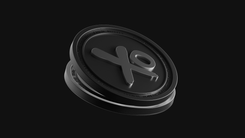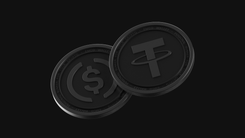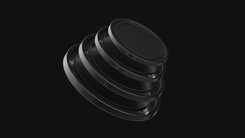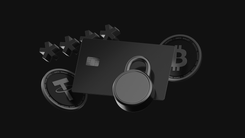How to Mine Bitcoin Cash
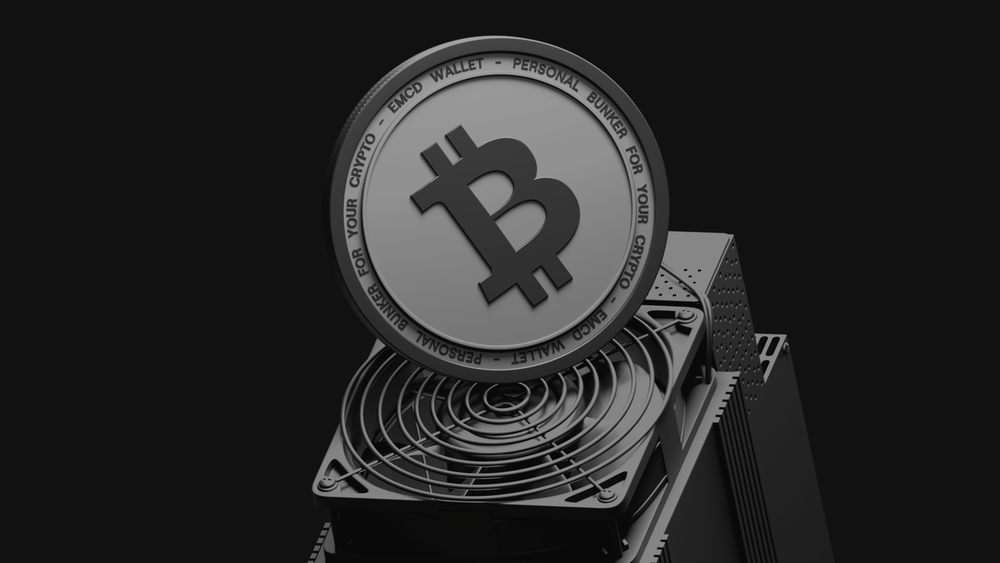
Cryptocurrency mining remains a popular way to earn income in the digital world. This is especially true for Bitcoin Cash — one of the most well-known Bitcoin alternatives. In 2025, mining BCH has become easier: hardware is more powerful, and mining pools are more stable and user-friendly. Here’s how it works.
Contents:
- What Is Bitcoin Cash and How Is It Different?
- Why Mine Bitcoin Cash in 2025?
- What You Need to Mine Bitcoin Cash
- How to Set Up BCH Mining
- Best Mining Pools for BCH
- How Much Can You Earn Mining Bitcoin Cash?
- Common Mistakes and Pitfalls
- How to Store and Withdraw BCH
- The Future of BCH Mining and the Crypto Landscape
- FAQ
What Is Bitcoin Cash and How Is It Different?
Bitcoin Cash (BCH) is a cryptocurrency that was created through a Bitcoin hard fork in 2017. Its main goal was to increase the block size — first to 8 MB, then to 32 MB — to speed up transaction processing and reduce fees. BCH uses the Proof-of-Work (PoW) algorithm and the SHA-256 hash function, just like Bitcoin, which makes it compatible with the same mining hardware.
Why Mine Bitcoin Cash in 2025?
In 2025, mining BCH still makes sense for those seeking a balance of profitability, accessibility, and lower competition. While Bitcoin mining has become highly industrialized and centralized, BCH offers miners a more stable alternative.
Modern ASIC devices like the Whatsminer M63 Hydro can generate profits even with rising electricity costs. With a hash rate around 366 TH/s and power usage near 7.2 kW, you can still earn stable income — especially in regions with lower electricity rates. BCH’s lower network difficulty compared to BTC means it's easier to find blocks, reducing downtime and speeding up ROI.
In addition, the mining hardware market has matured. New models are easier to buy, more reliable, quieter, and more energy-efficient. This lowers the entry barrier for beginners or those expanding operations without major investment.
Importantly, BCH is still alive and active — it’s traded, used, and continuously developed. It’s not a dead fork but a viable asset with its own ecosystem and a steady transaction flow. While major players fight over BTC, BCH miners can earn more predictably.
What You Need to Mine Bitcoin Cash
To mine BCH, you’ll need an ASIC miner compatible with SHA-256. In 2025, popular models include the Whatsminer M63 Hydro, Antminer S19 XP Hydro, and others. Key specs to consider are hashrate (TH/s) and energy consumption. The more efficient the device, the higher your profitability.
You’ll also need to factor in your electricity costs. Even the most powerful hardware won't help if your energy bill wipes out your earnings.
How to Set Up BCH Mining
Start by connecting your ASIC miner to both power and the internet. Then, use a network scanner tool to find the device’s IP address. Once you have the IP, open it in your browser to access the ASIC’s web interface.
From there, select a mining pool such as EMCD, ViaBTC, or F2Pool. You'll need to enter the pool address, a worker name (usually your account login and a unique device ID), and a password — this is often optional, and almost any value will work.
Some ASIC miners come with built-in firmware. If yours doesn’t, you’ll need to download the recommended SHA-256 mining software directly from the manufacturer’s website.
Best Mining Pools for BCH
The pool you choose impacts your payouts, stability, and ease of use. Here's a comparison table of the most popular BCH pools in 2025, covering payout methods, fees, supported hardware, and interface features.
| Pool | BCH Support | Payout Method | Fee | ASIC/GPU | Minimum Payout | Support & Usability |
| EMCD | Yes | PPS | ~1% | ASIC | Low | High |
| ViaBTC | Yes | PPS+, PPLNS | ~2% | ASIC | Medium | Good |
| F2Pool | Yes (may be limited) | PPS | ~2.5% | ASIC | Good | Средний |
| 2Miners | Yes | PPLNS | ~1% | ASIC,GPU | Low | Simple and clear |
How Much Can You Earn Mining Bitcoin Cash?
As of 2025, BCH mining can still be profitable, but less predictable than before. Earnings depend on hardware, electricity rates, and market conditions. Let’s take an example.
With a Whatsminer M63 Hydro (366 TH/s, 7283 W) and an electricity rate of $0.05/kWh your daily profit is about $13 (after power costs). That means ROI in ~1050–1100 days (around 3 years), assuming no major disruptions.
Key factors to watch:
- BCH Price. If the coin’s price drops, your profits decrease as well. If BCH rises sharply in value, you earn more. In 2024, the price fluctuated significantly, and this volatility is likely to continue
- Mining difficulty. Network difficulty adjusts automatically — as more miners join, competition increases, and you earn less for the same amount of work. This becomes especially noticeable during market peaks
- Electricity rates. Electricity rates vary greatly across regions and countries. In large cities, mining is often unprofitable. But in areas with cheap energy, conditions are much more favorable. And if you have your own power source, that’s almost the ideal scenario
- Maintenance and Risks. Don’t forget about costs for cooling, maintenance, repairs, internet outages, and potential legal issues (in some regions, mining is restricted or subject to extra taxes)
Under ideal conditions, you could earn $350–$400 per month from one M63 Hydro. But in reality, earnings fluctuate, and long-term success depends on market awareness and good hardware management.
If you’d like a custom calculation based on your setup, power costs, or miner model, just ask.
Common Mistakes and Pitfalls
Mining BCH in 2025 can be profitable, but many miners — especially beginners — face common challenges:
- Incorrect setup. Misconfigured firmware, frequency settings, or pool details can cut performance in half or cause overheating. Follow manufacturer instructions or consult experienced miners
- High electricity costs. Mining makes no sense if energy costs eat all your profits. Many users relocate to cheaper regions or rent space in data centers
- Unreliable pools. Some pools are unstable, delay payouts, or charge high fees. Read reviews and avoid unknown pools with low hashrate participation
- Rising difficulty. More miners = more competition = lower profits per unit of power. This is especially noticeable during bull markets
- Price volatility. Cryptocurrency prices can swing wildly. Sometimes, it’s smarter to pause mining during price drops
- Ignoring maintenance costs. Repairs, internet outages, and downtime add up. Neglecting these costs can turn profits into losses
- Firmware issues. Using third-party firmware may boost performance — but if misapplied, it can brick your device. Stick with trusted updates and check compatibility
How to Store and Withdraw BCH
In 2025, users have several secure options to store and withdraw BCH — depending on whether they want long-term storage, daily spending, or fast fiat conversion.
Hardware Wallets
Ideal for large amounts. Devices like the Ledger Nano X or Trezor Model T store private keys offline. Always buy from official sources to avoid counterfeit products.
Software Wallets
For daily use:
- Electron Cash. Lightweight wallet designed for BCH
- Exodus. User-friendly, supports different language, multi-asset
- Trust Wallet. Popular and easy to use
Exchanges and Platforms
To trade or convert BCH:
- Binance. Widely used
- OKX, Bybit. Popular for trading and withdrawals
- P2P platforms. Sell BCH directly for various currencies without banks
Security Tips
- Always enable two-factor authentication (2FA)
- Use only trusted websites and apps
- Store seed phrases offline — never on your phone or cloud
The Future of BCH Mining and the Crypto Landscape
Bitcoin Cash mining is still relevant in 2025. Hardware is getting faster and more efficient, reducing mining costs. Interest in decentralized systems is growing, supporting demand for BCH.
The BCH network continues to evolve, offering fast transactions and low fees — ideal for daily payments and developers building payment solutions.
The future of mining depends largely on regulation. Countries with crypto-friendly laws will foster growth. In stricter regions, mining may be pushed out.
Risks like price drops remain. If BCH loses value, mining can become temporarily unprofitable. But if demand increases, more miners and investors will return.
Technological advances also matter — from energy-efficient mining methods to innovations like CashTokens or second-layer protocols. These could strengthen BCH’s position and expand its real-world use.
Despite the risks, BCH mining in 2025 can be a profitable venture — especially for those willing to adapt and keep up with the tech.
FAQ
What’s the best ASIC for BCH mining in 2025?
The Whatsminer M63 Hydro is among the top options: 366 TH/s at 7283 W. With cheap electricity and proper cooling, it offers fast ROI and stable earnings.
How is BCH mining different from Bitcoin mining?
Both use SHA-256, but BCH has lower competition and easier block discovery. This means more predictable income for smaller-scale miners.
Can you mine BCH without an ASIC?
No. CPUs and GPUs no longer offer viable hashrates for BCH. Only ASICs are suitable.
How to choose a BCH mining pool?
Compare fees, payout stability, interface convenience, and reputation. Pools often change their terms, so double-check before joining.
How much electricity does BCH mining use?
For example, the M63 Hydro consumes ~7.3 kW/h. That’s ~175 kWh per day. Multiply by your local rate to assess profitability.
Is BCH mining profitable in 2025?
Yes — if you have modern equipment and cheap power. It’s less competitive than BTC and cheaper to enter. Just monitor the market and network changes.

